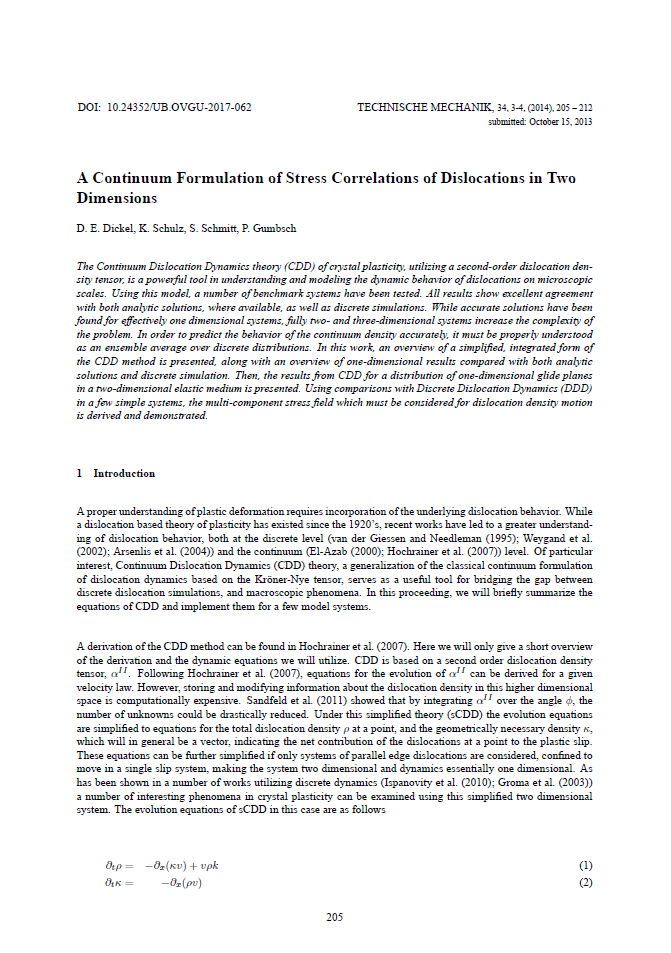A Continuum Formulation of Stress Correlations of Dislocations in Two Dimensions
DOI:
https://doi.org/10.24352/UB.OVGU-2017-062Abstract
The Continuum Dislocation Dynamics theory (CDD) of crystal plasticity, utilizing a second-order dislocation density tensor, is a powerful tool in understanding and modeling the dynamic behavior of dislocations on microscopic scales. Using this model, a number of benchmark systems have been tested. All results show excellent agreement with both analytic solutions, where available, as well as discrete simulations. While accurate solutions have been found for effectively one dimensional systems, fully two- and three-dimensional systems increase the complexity of the problem. In order to predict the behavior of the continuum density accurately, it must be properly understood as an ensemble average over discrete distributions. In this work, an overview of a simplified, integrated form of the CDD method is presented, along with an overview of one-dimensional results compared with both analytic solutions and discrete simulation. Then, the results from CDD for a distribution of one-dimensional glide planes in a two-dimensional elastic medium is presented. Using comparisons with Discrete Dislocation Dynamics (DDD) in a few simple systems, the multi-component stress field which must be considered for dislocation density motion is derived and demonstrated.





